Land of Volcanoes: Exploring Aso-Kuju National Park
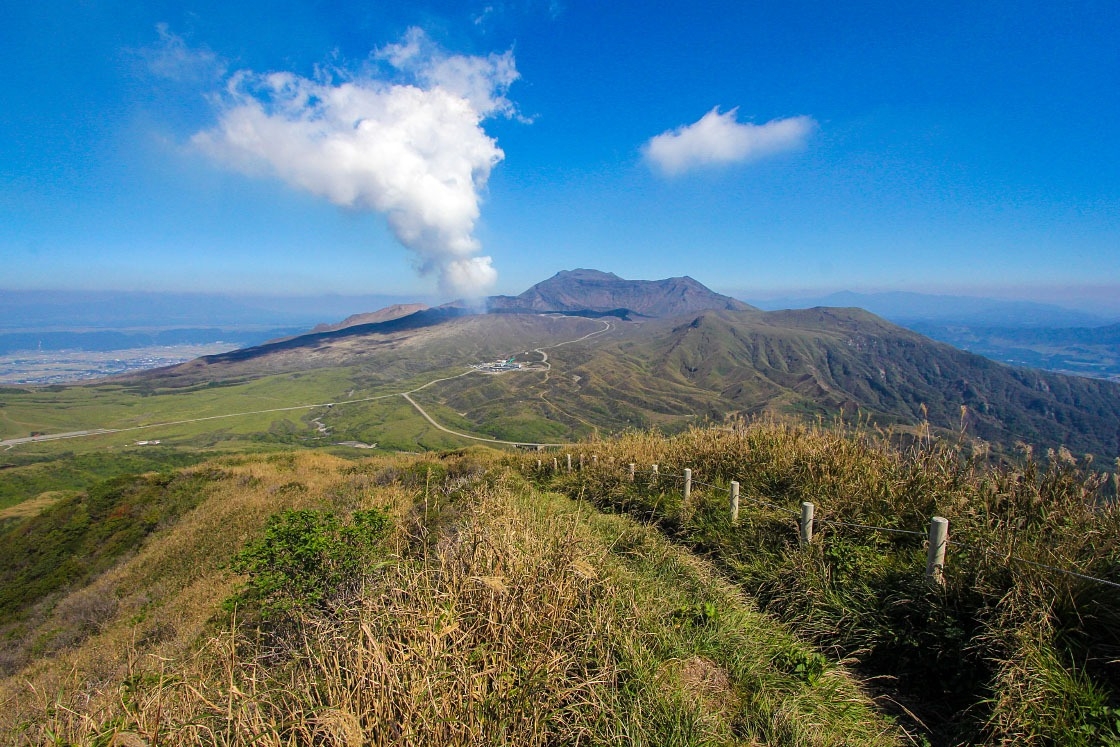
The active peak of Mt. Aso
To truly appreciate this part of Japan's geology, you have to see it for yourself. And few places in Japan display the scale of earth's volcanic power more dramatically than Aso-Kuju National Park.
Located in the middle of Kyushu, Japan's southernmost main island, Aso-Kuju National Park is made up of a collection of volcanic mountains and the unique landscapes surrounding them. From the highly active Mount Aso and its city-sized caldera to the Kuju Mountains, the highest mountains on Kyushu, to the twin-peaked Mount Yufu and the popular hot spring resort town of Yufuin at its foot, the park offers much to explore.
To experience the best of what this place has to offer, I journeyed to Kyushu for a two-day trip, starting in nearby Kumamoto City.
Day 1: Aso
With a lot of ground to cover and just two days to do it in, I decided to get myself a rental car. While it is possible to travel around the park by train and bus, having a car offers a great deal of freedom and time to visit virtually any place you want.
And so I began my drive. Approaching the west entrance of the Aso Caldera, you might be hard pressed to distinguish it from other rural mountain areas in the country. But then, cresting the outer rim, a giant mountain in the middle of a suspiciously shaped valley filled with rice fields and rural towns comes into view. And I started to feel a sense of the scale of this place.
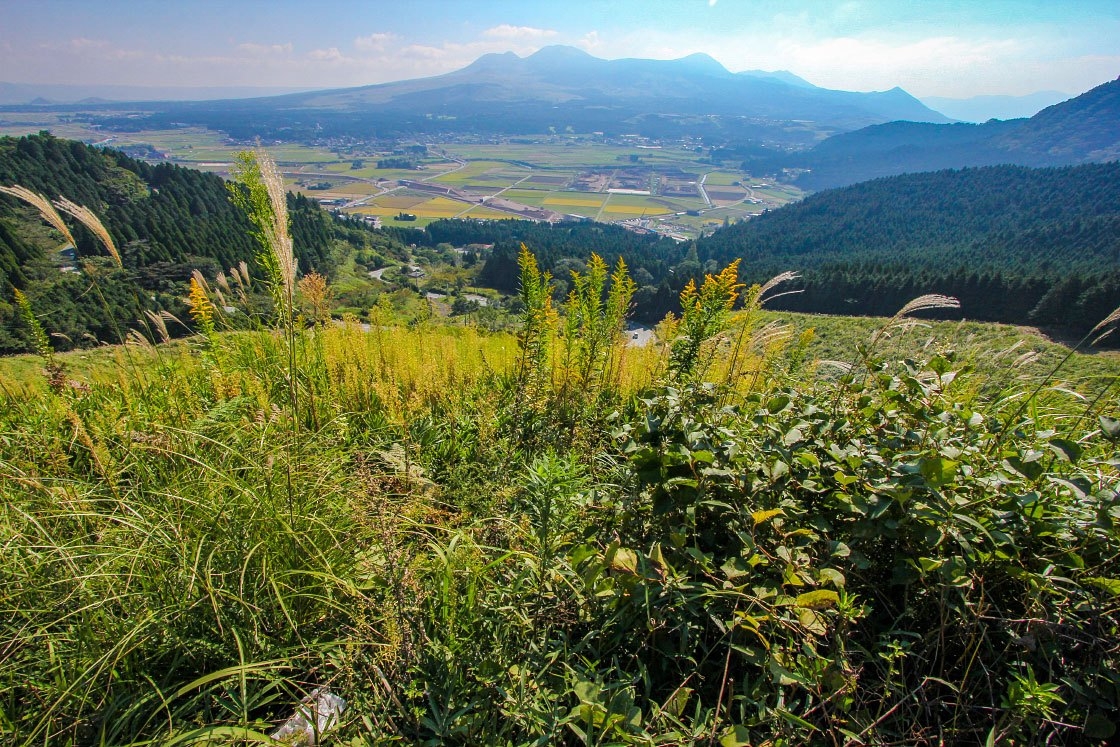
Mt. Aso in the distance, seen from the outer caldera rim
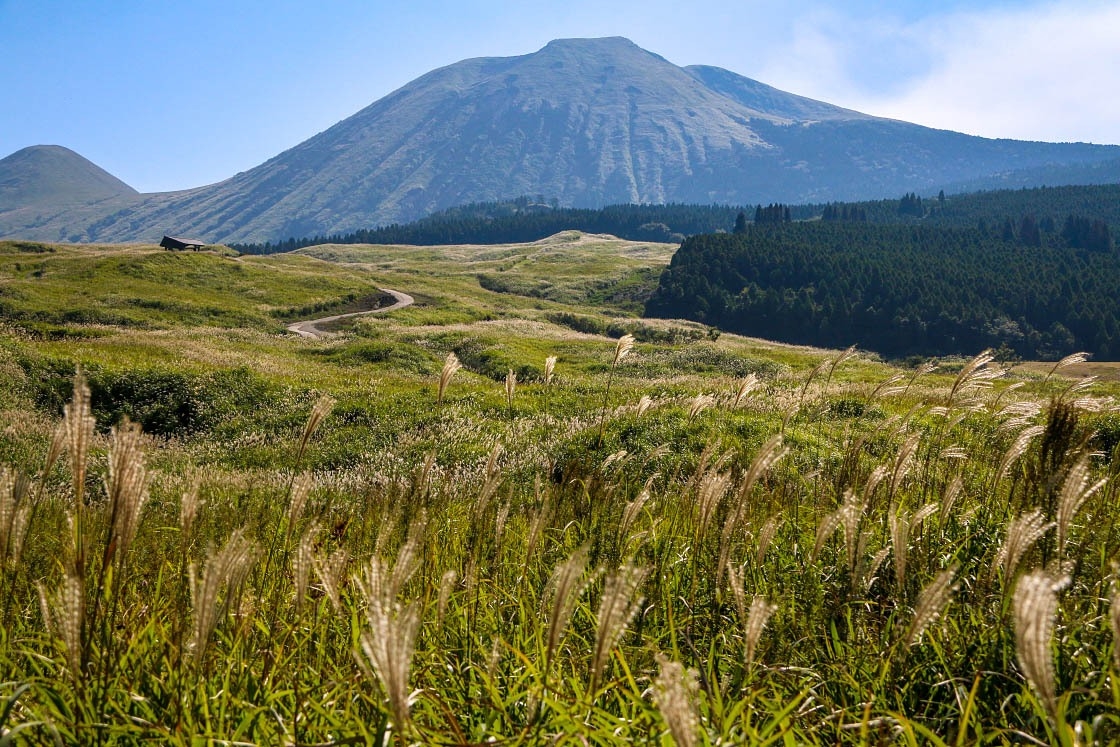
Driving through the grassy fields surrounding Mt. Aso
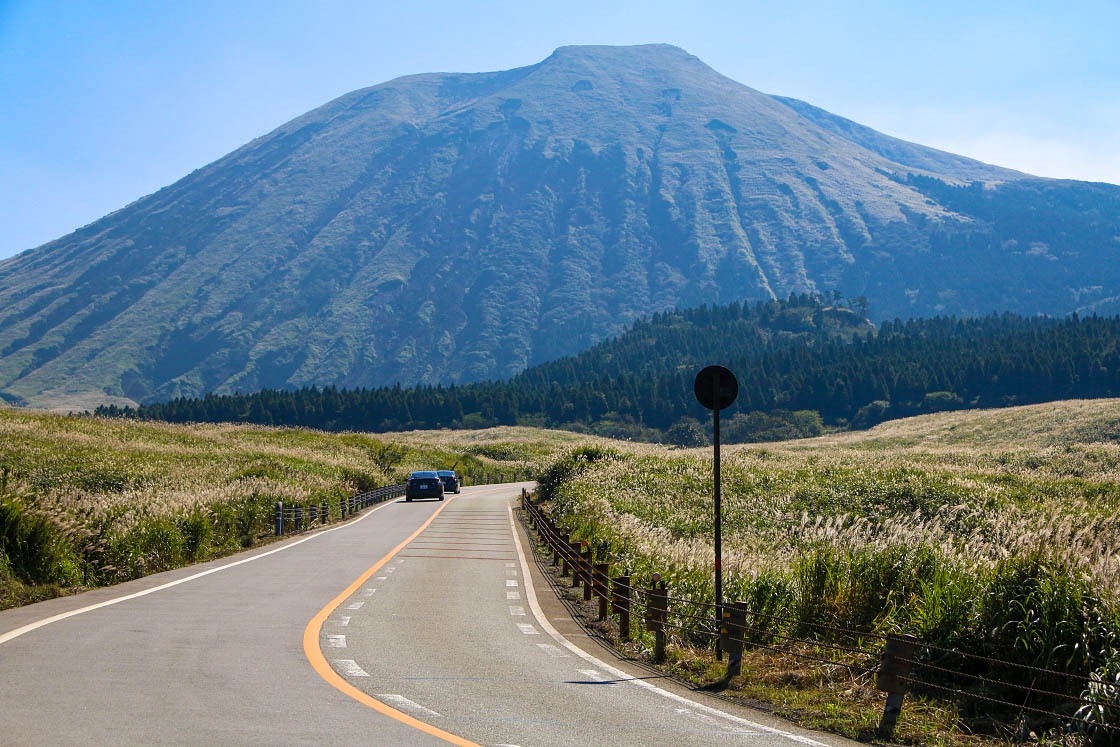
Getting around by car is a great way to explore the national park
The most striking feature to me as I drove was the distinct lack of trees. Unlike so many other mountains in Japan, the mountainsides here were instead covered almost entirely in grasses, including an abundance of susuki (pampas grass), which on this October day were glowing a whitish gold in the morning light.
Also dotting the large meadows were horses and cattle, grazing or resting in the grasses.
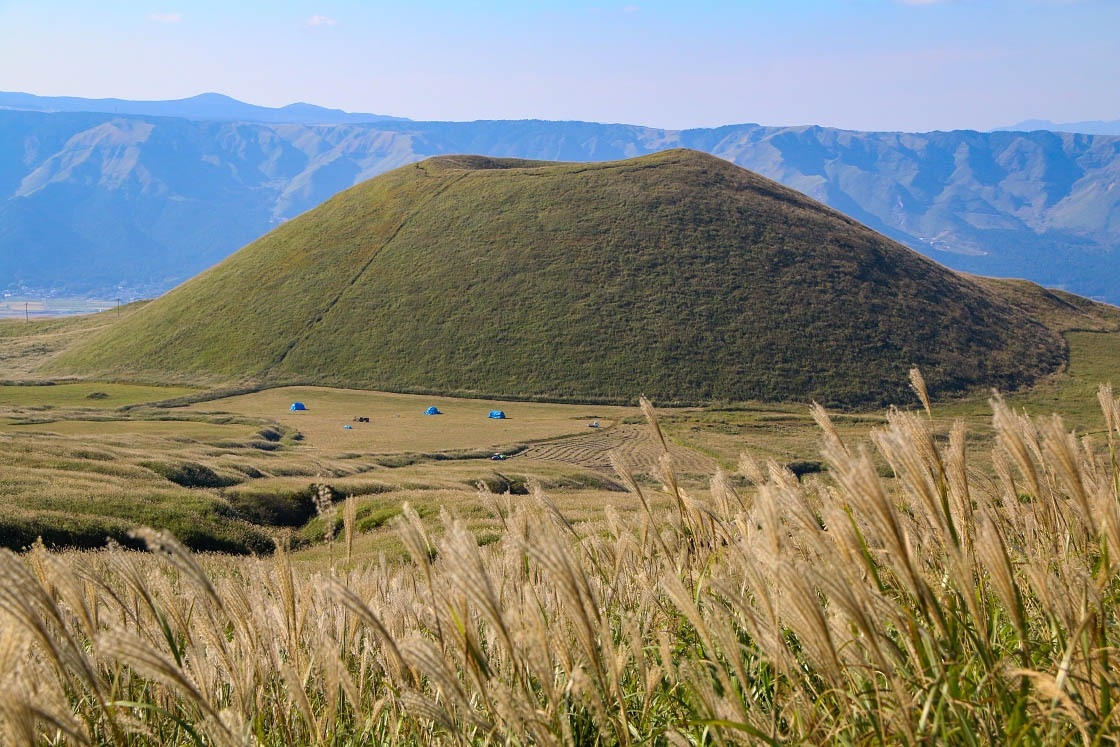
A perfect volcanic cone by the name of Komezuka rising from the grass around Aso
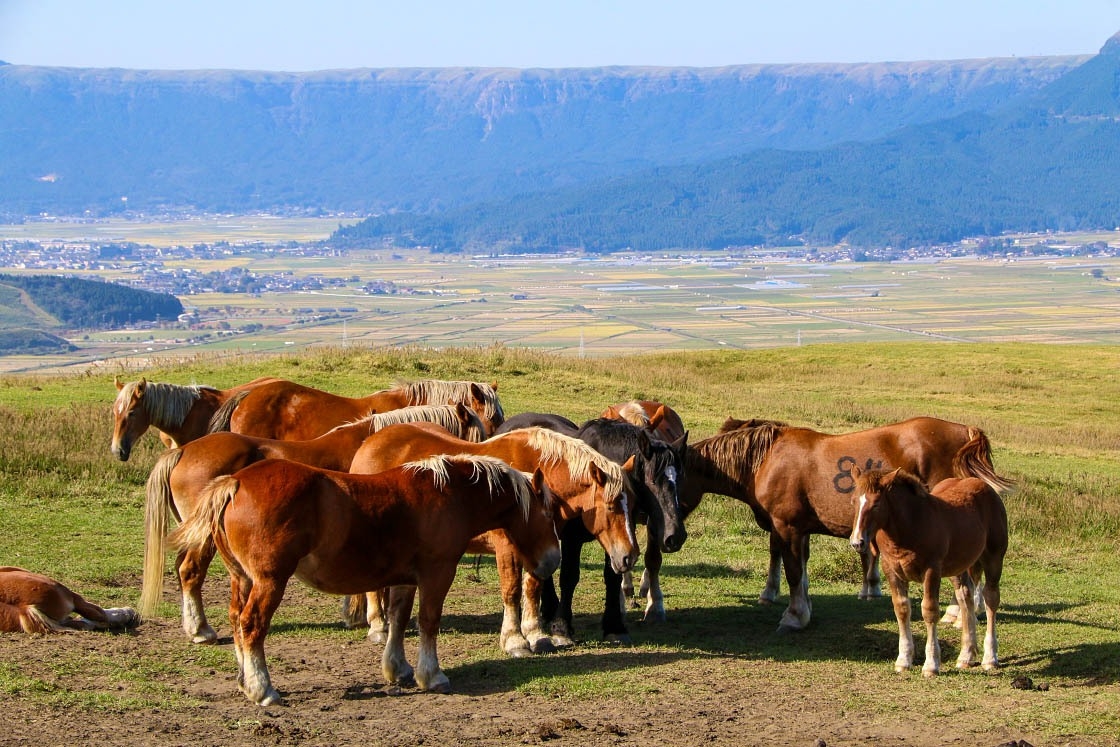
Horses and cows graze in highland pastures all over Aso
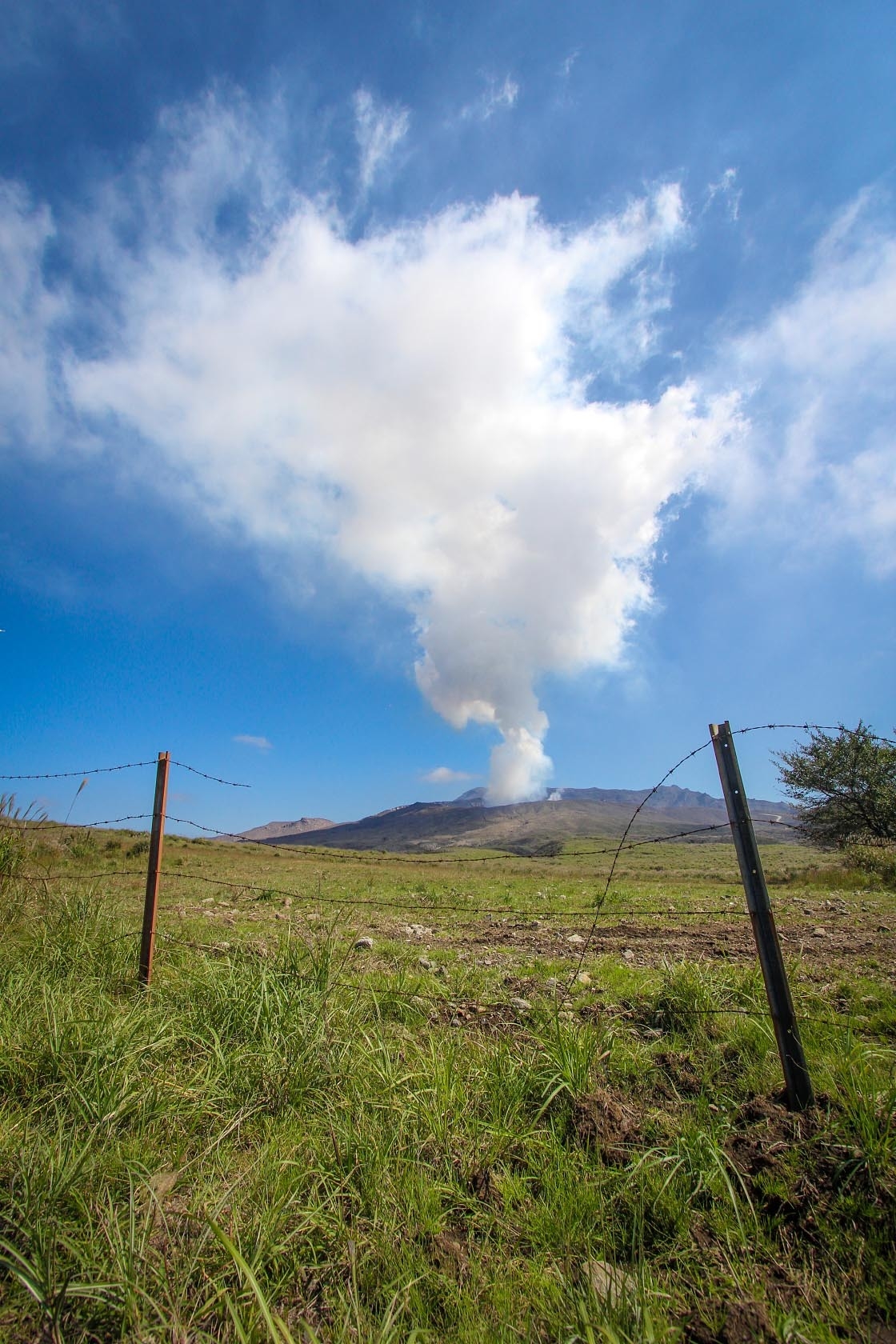
Smoke billowing from Naka-dake crater
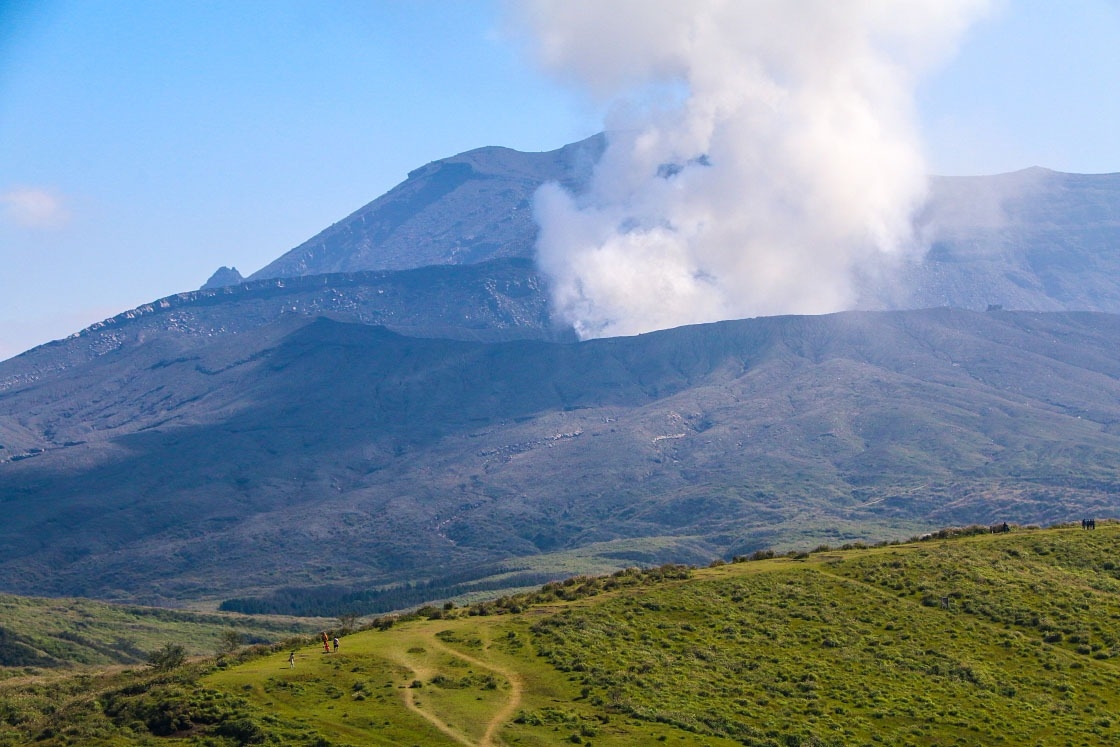
The Naka-dake crater from afar
Wanting to take some time to explore this uncannily quiet place, the prominent peak called Mt. Eboshi towering above the field called my name. So I grabbed my hiking shoes and headed across the field toward the mountain.
About 40 minutes later, I found myself looking down over an incredible view of the landscape.
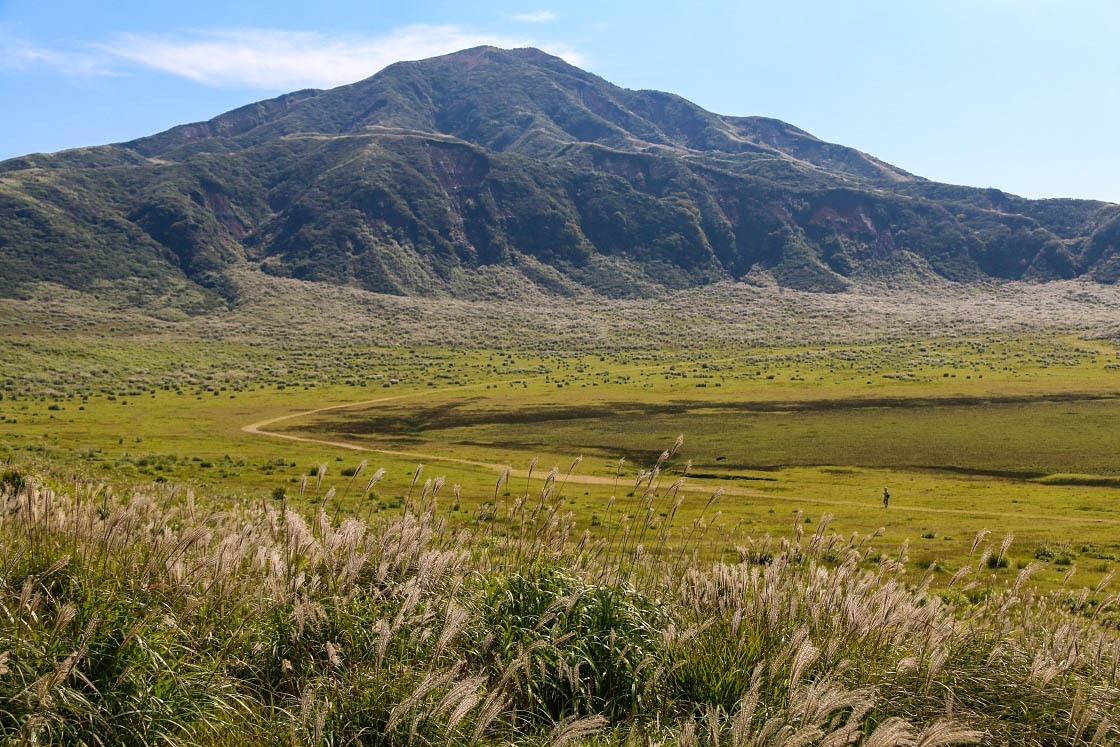
Mt. Eboshi rising above the Kusasenri, an enormous volcanic crater now quiet a pasture
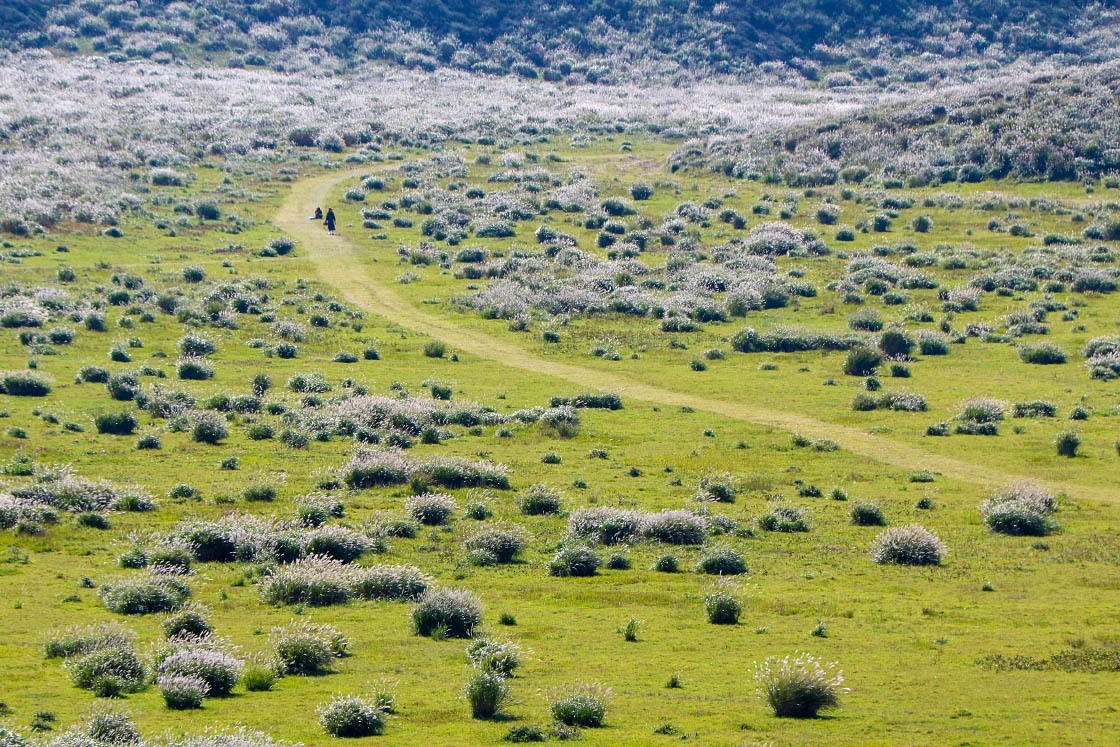
Walking through the Kusasenri
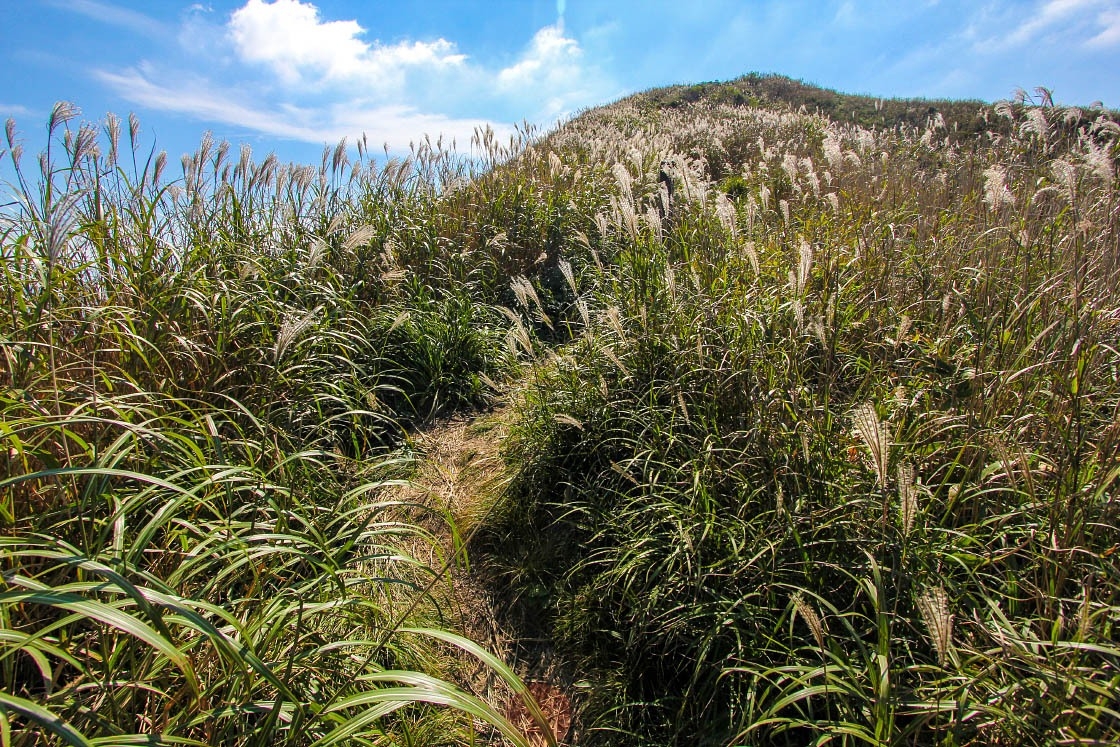
A hiking trail up Mt. Eboshi, surrounded by susuki (pampas grass)
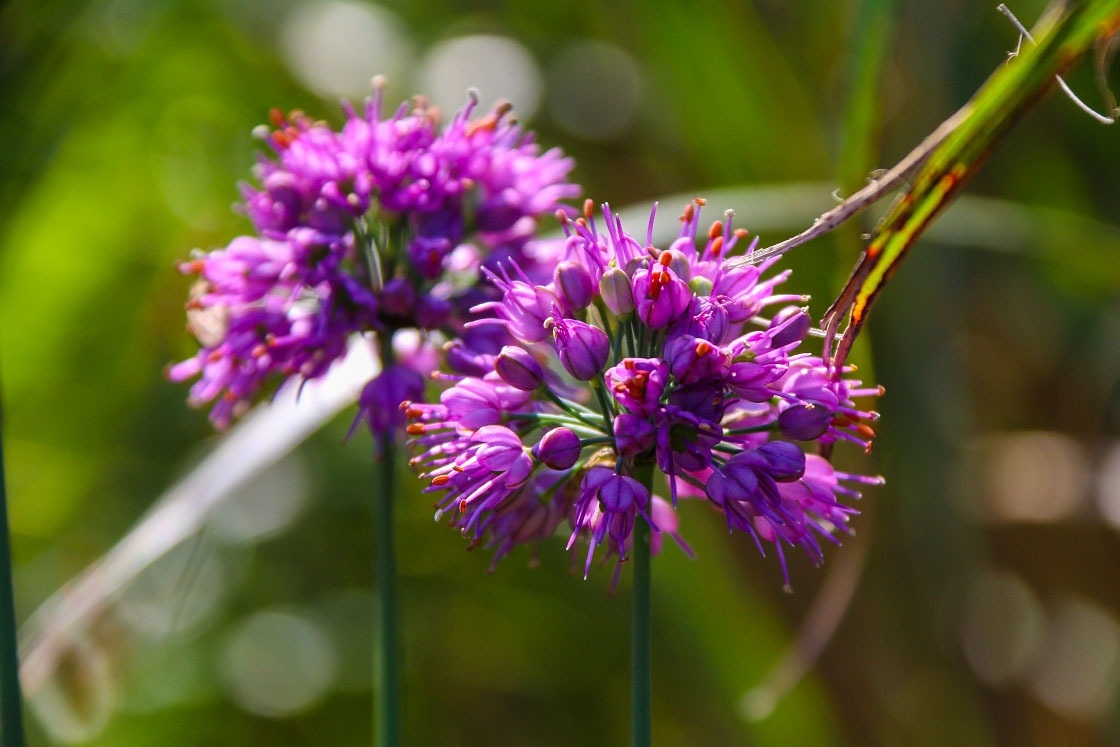
Mountain flowers
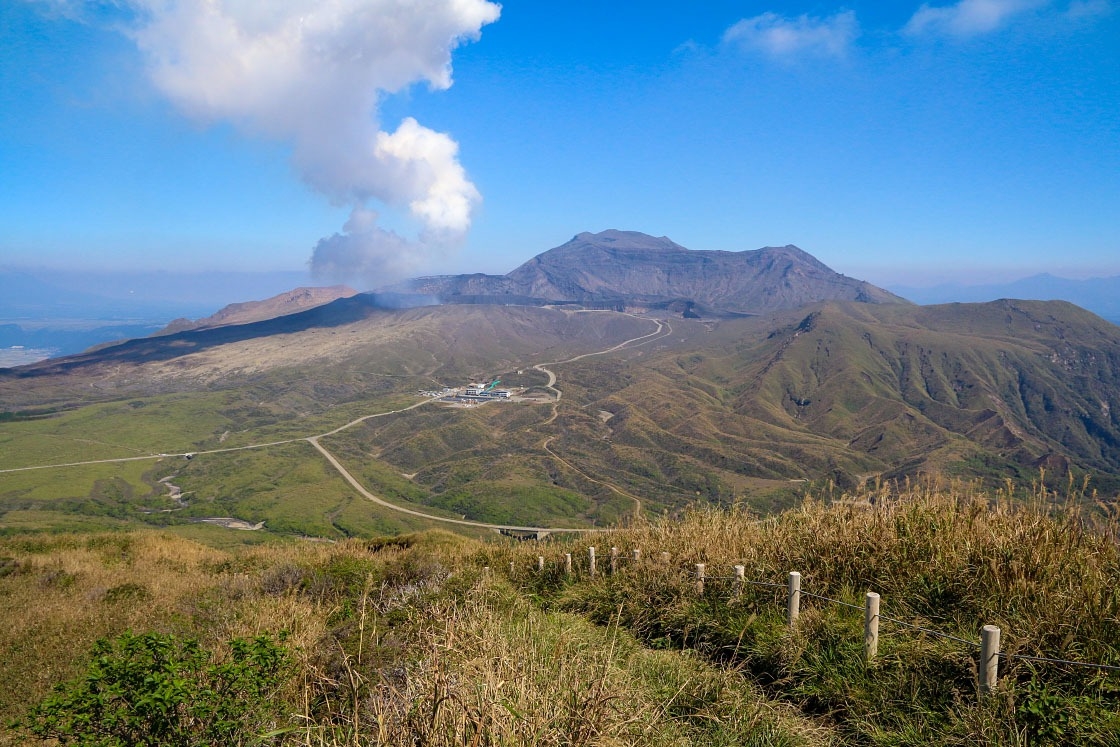
The view from the top of Mt. Eboshi
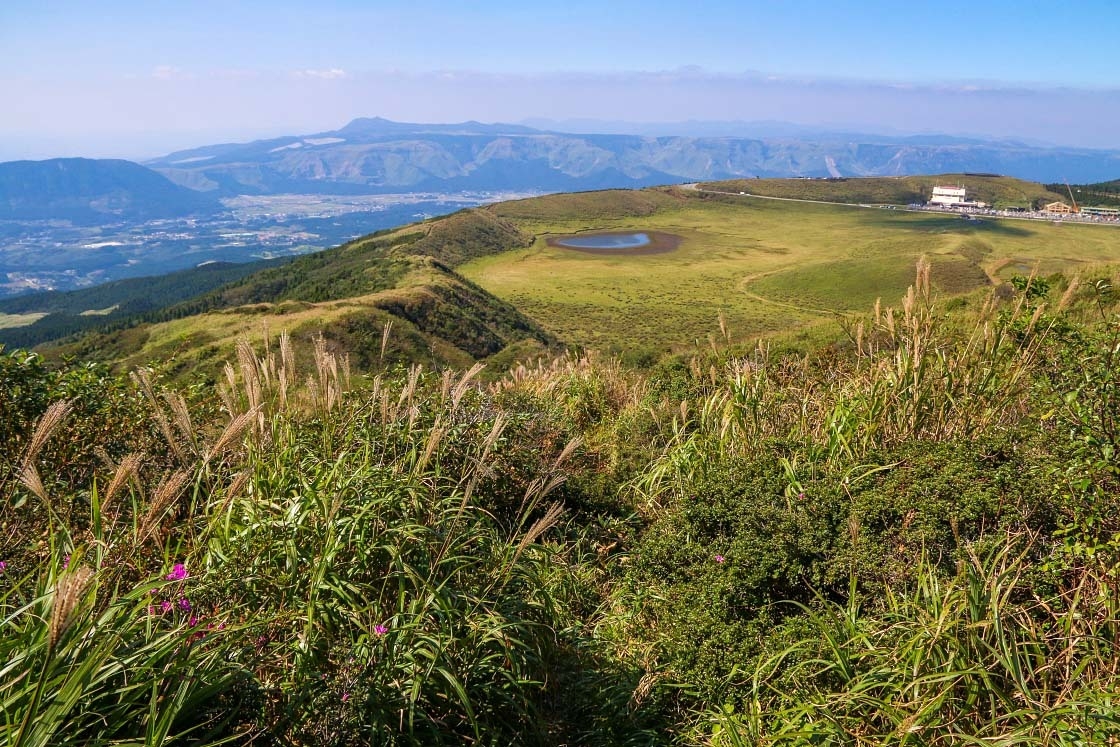
Heading back down Mt. Eboshi, looking over the Kusasenri, the Aso Volcano Museum, and the outer caldera rim in the far distance
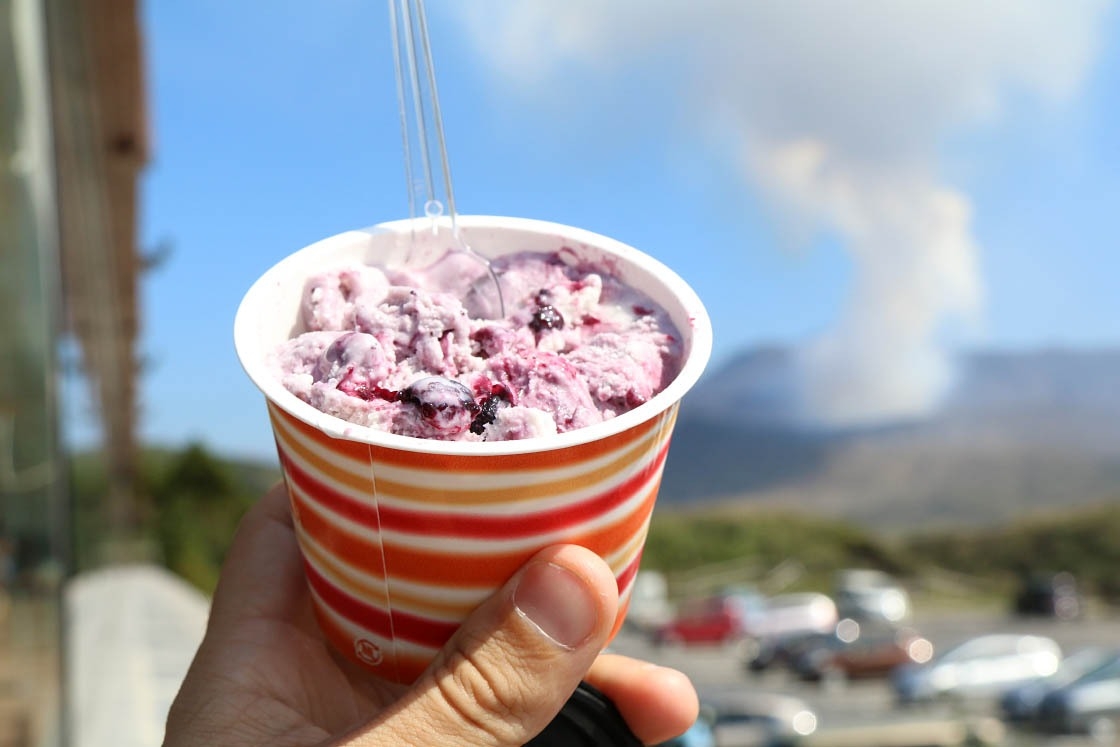
Back down the mountain with a tasty post-hike ice cream made from local cow's milk
On the day I visited (in October 2019), significant volcanic activity had forced the closure of the area for many months, with a no-entry zone with a 1-kilometer radius extending from the center of Naka-dake.
While the closure is expected to be lifted, even when the area is accessible, gases around the actual crater can be very intense and potentially dangerous and shouldn't be taken lightly. Before visiting, you can check current warning levels and access conditions at the Aso Volcano Disaster Prevention Council website.
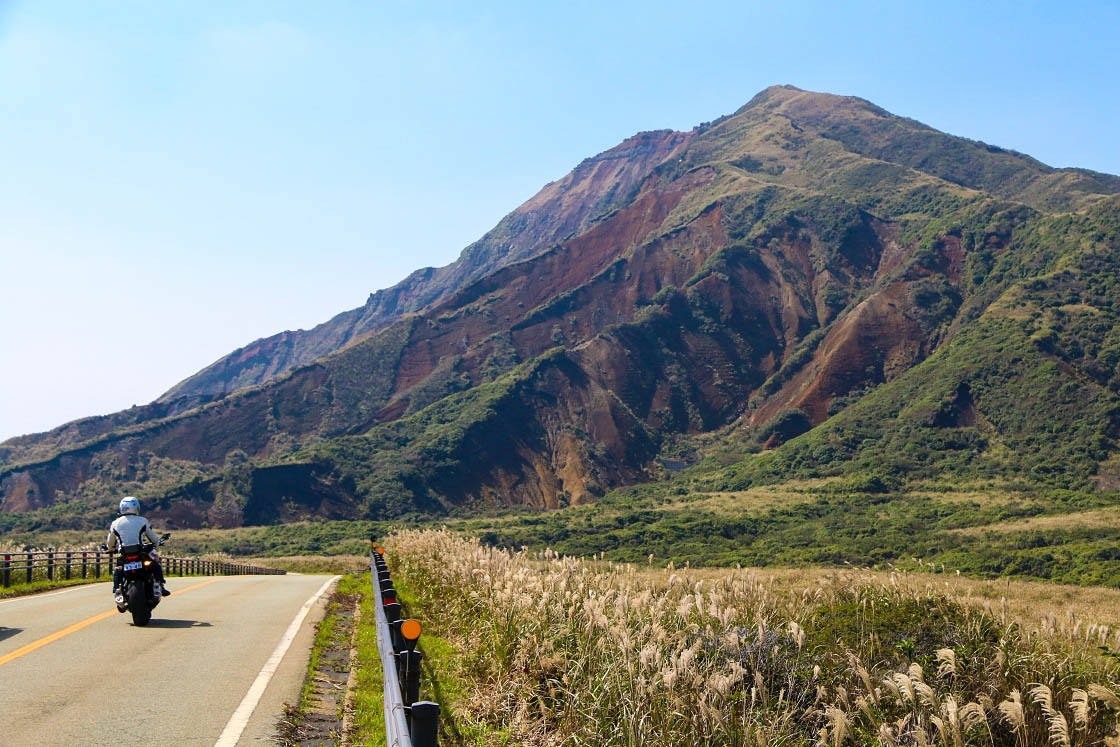
Back on the road (the back side of Mt. Eboshi looming overhead)
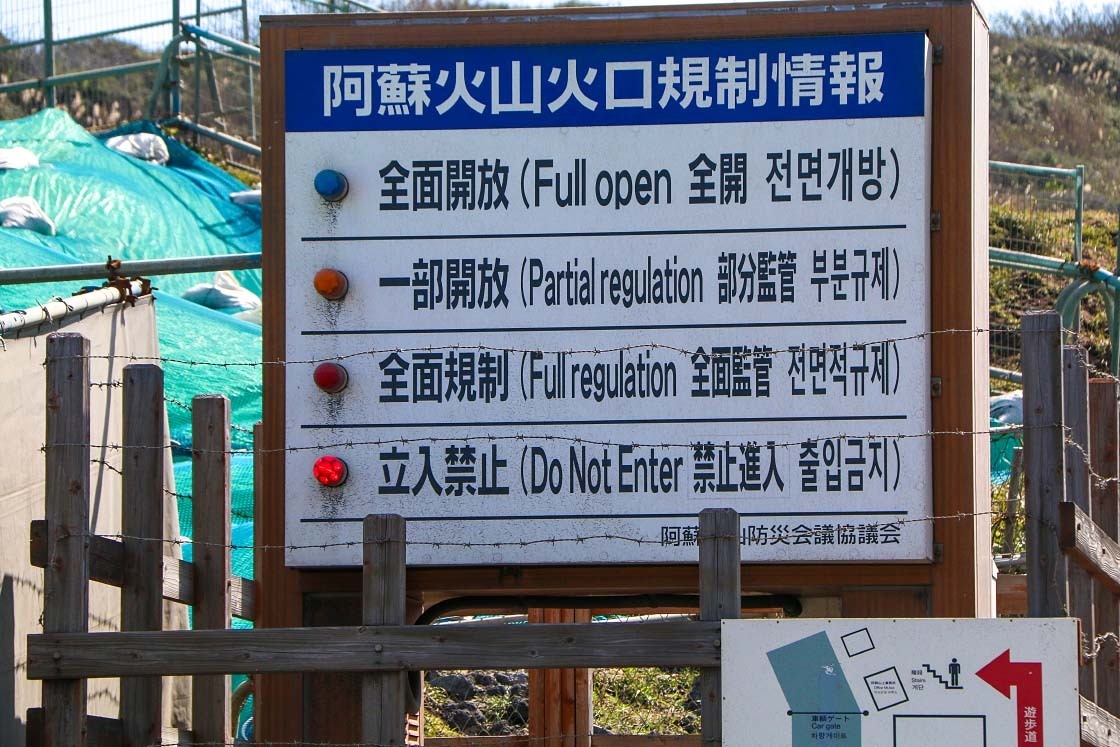
As of this writing, a 1-kilometer no-entry zone is in place around the Naka-dake crater due to recent volcanic activity
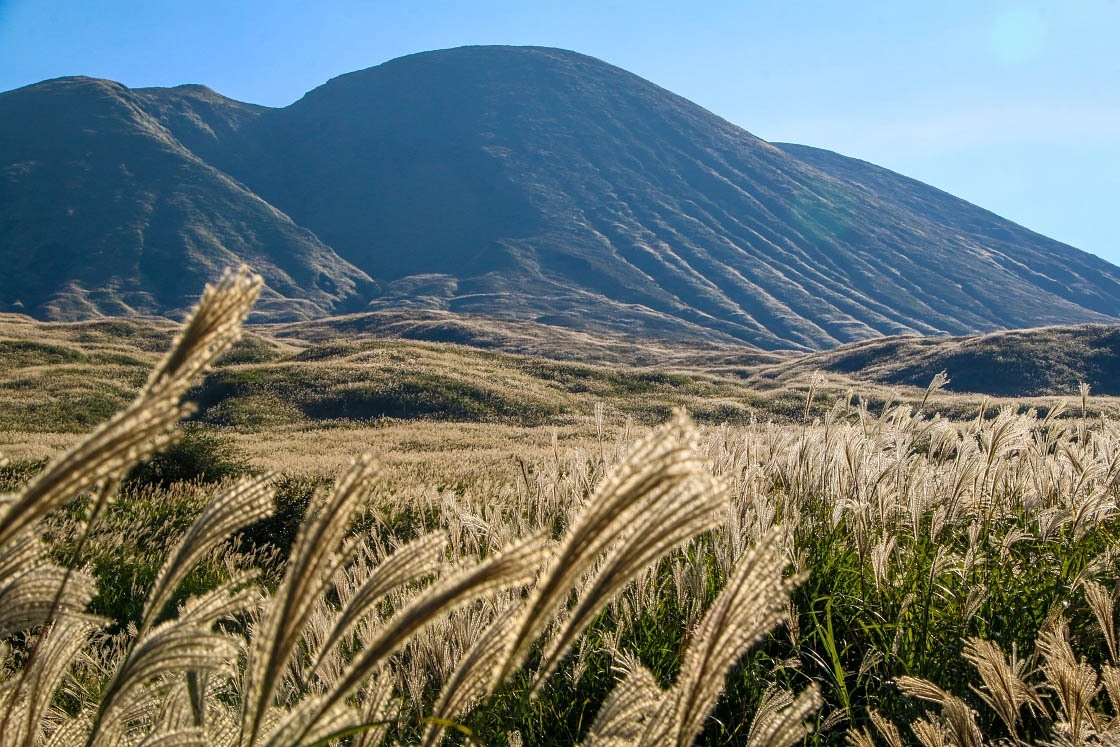
A sea of susuki (pampas grass) covering the north side of Mt. Aso

A whole city thrives inside the giant caldera of Aso
From here the sense of scale began to sink in. Below me stretched out a patchwork of rice fields and clusters of buildings with the hulking mass of Mt. Aso in the center. And wrapping around the entire city and mountain peaks ahead of me was the wall of rock upon which I was standing.
The entire place seemed punch out of the earth as if by the fist of an inconceivably enormous giant. Though contemplating its true origin--the mass of this entire area sinking into the earth as the vast magma chamber beneath it collapsed in sun-swallowing explosions of fire and smoke--may be even more humbling.
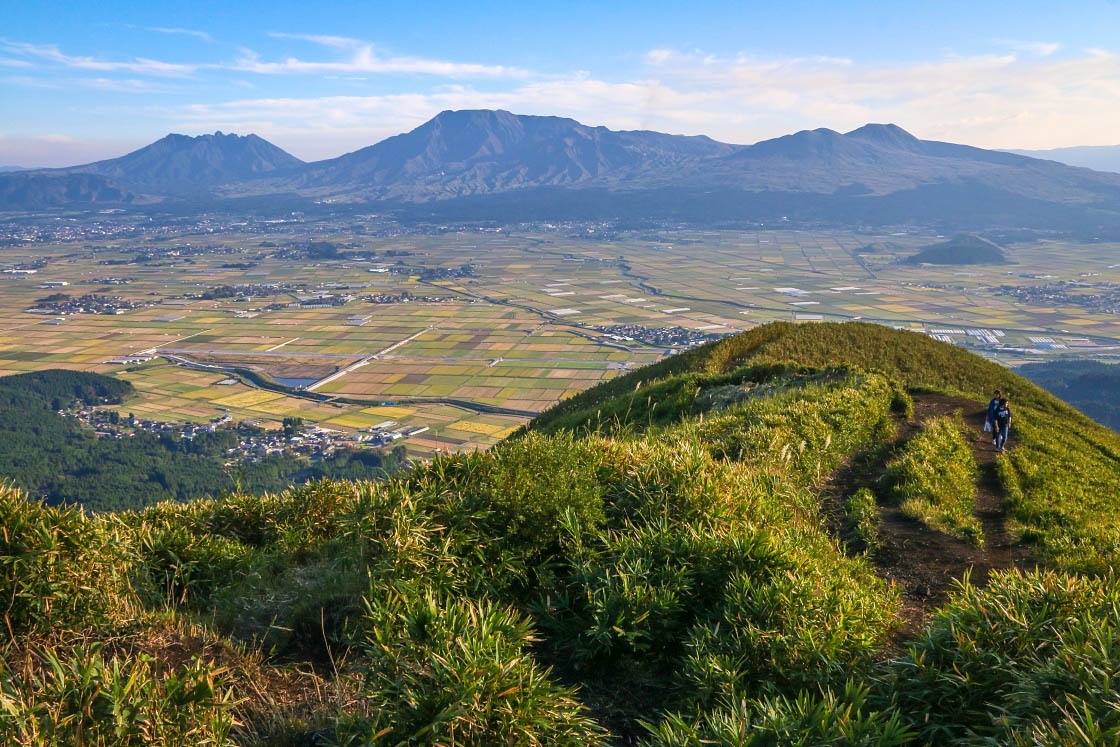
View looking in from the Daikanbo observatory on the north rim of the outer caldera
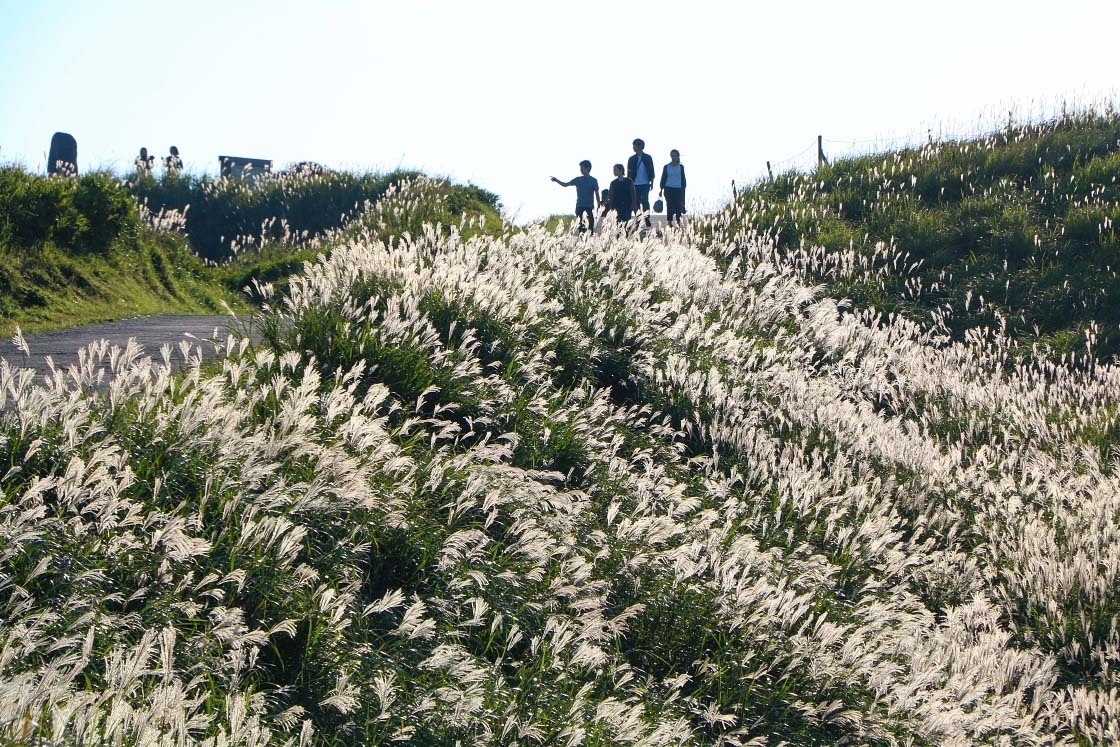
Susuki everywhere
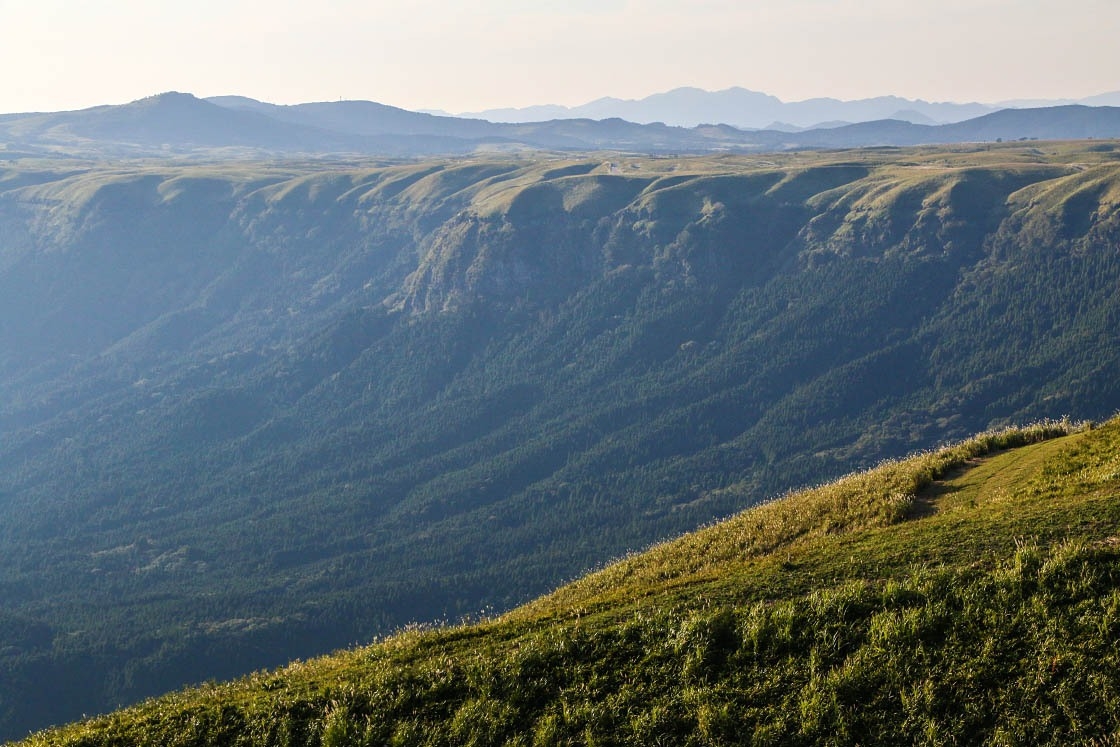
The scale of the outer caldera rim is hard to appreciate without traveling up the outer rim itself
Of course, with volcanoes naturally come hot springs, and dozens of famous onsen sources are located within or nearby the bounds of the park. And perhaps the most rewarding way to enjoy this unique natural experience is by staying at an onsen ryokan, or traditional Japanese inn.
My ryokan for the night, Sujiyu Onsen's Kokonoe Yuyutei, offered a great chance to bath in the town's hot spring water, with several indoor and outdoor baths I could dip in at my leisure--including a small private outdoor bath in my own room!
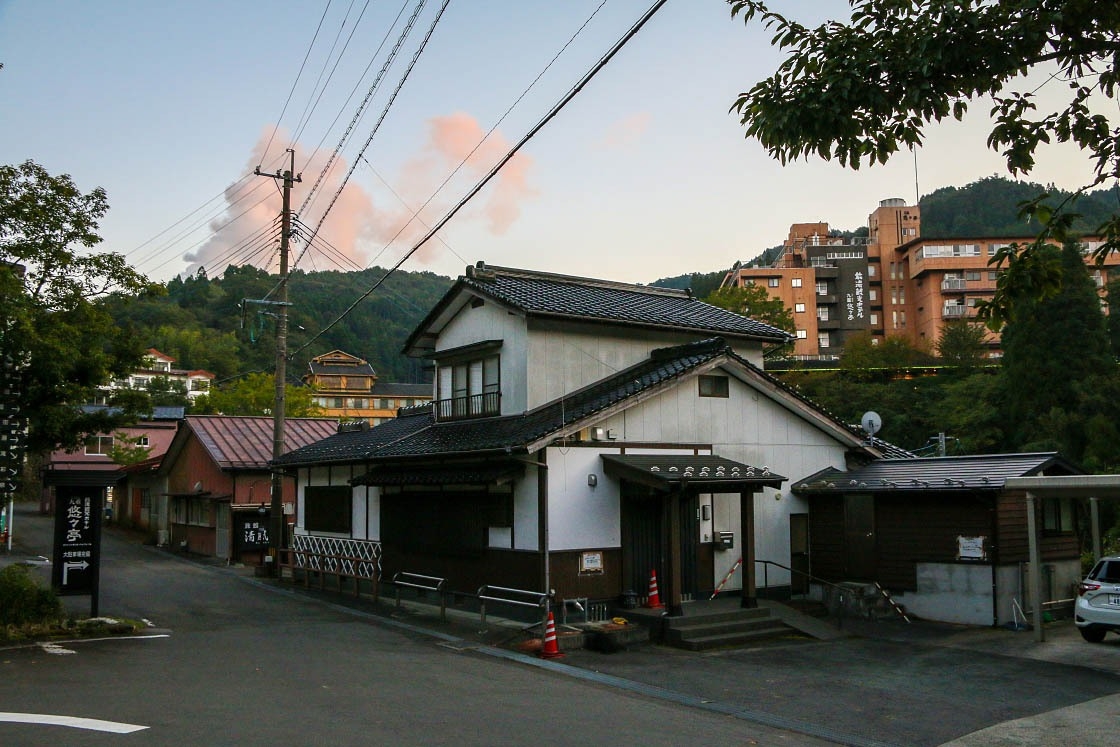
The town of Sujiyu Onsen in the shadow of a geothermal gas plume rising in the distance
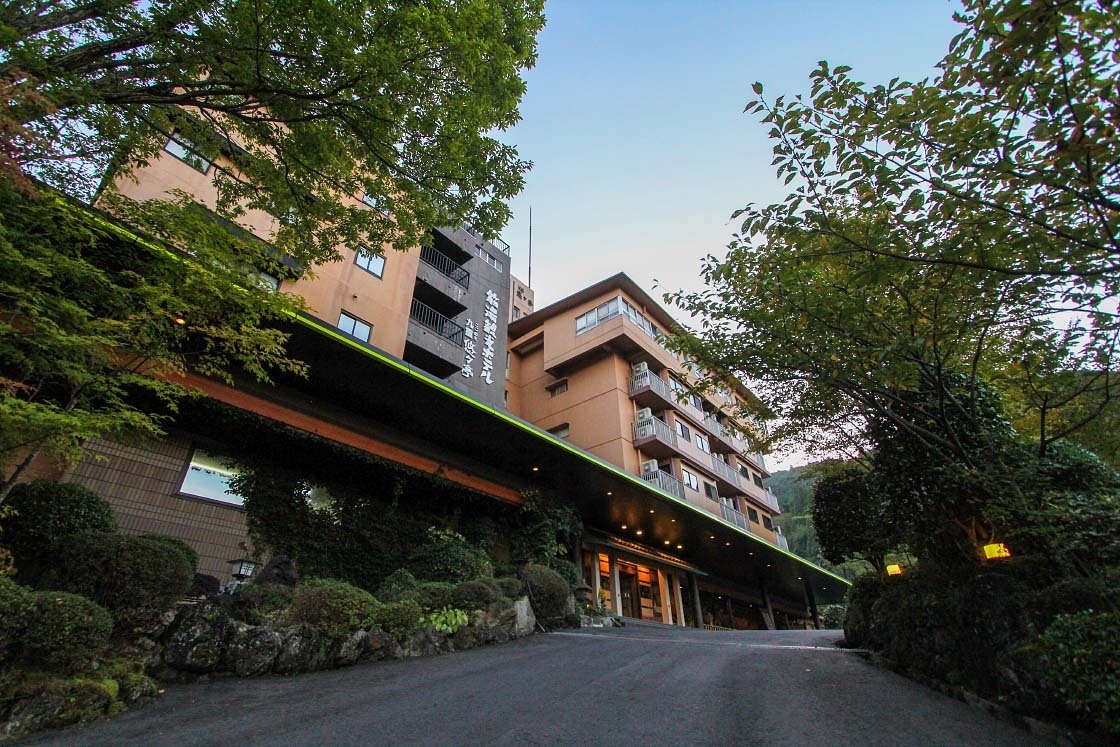
Kokonoe Yuyutei in Sujiyu Onsen, my onsen ryokan accommodation for the night
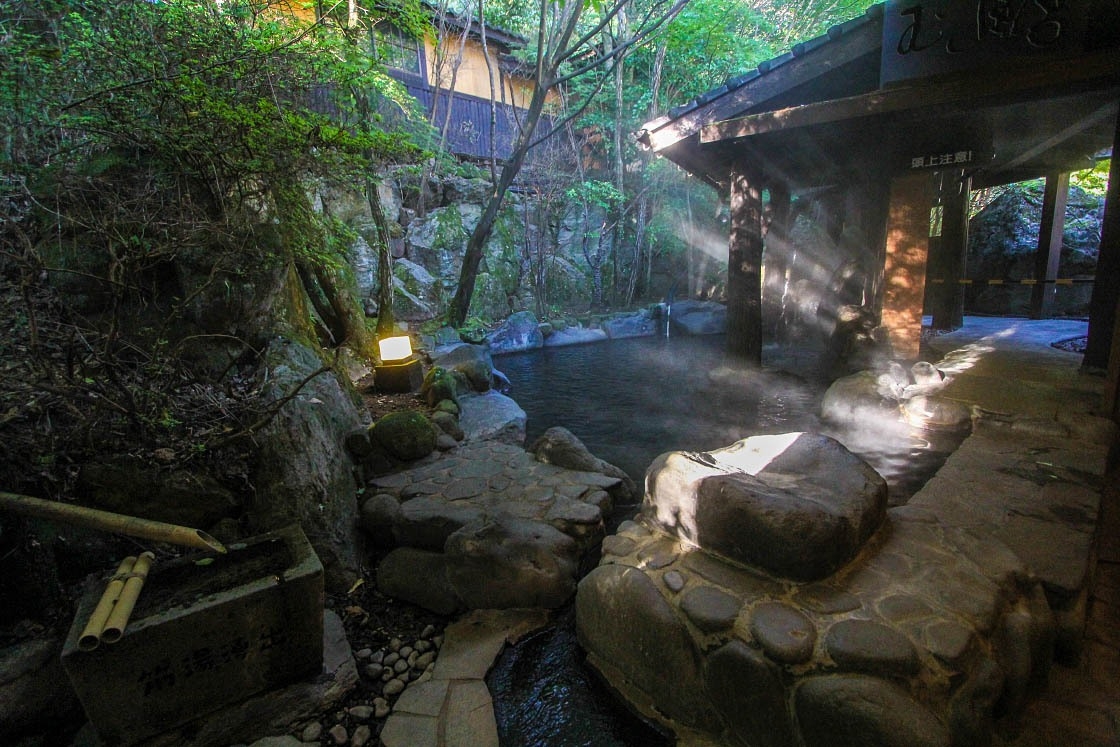
One of the lovely outdoor baths at Kokonoe Yuyutei
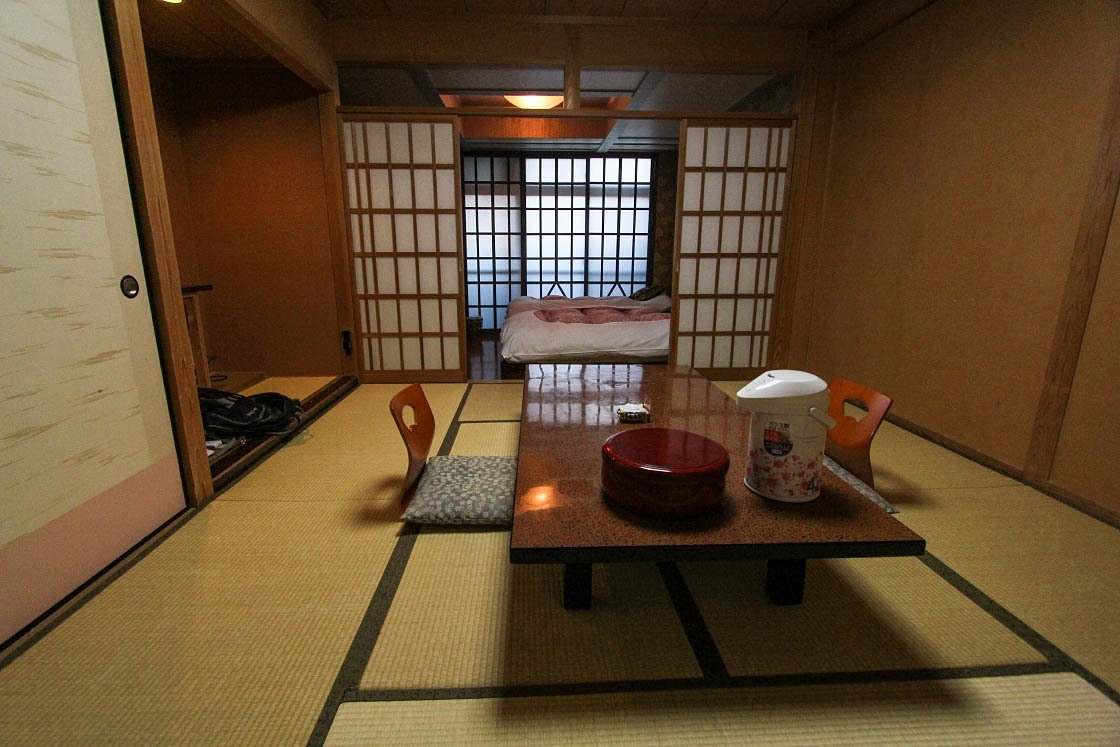
My room for the night
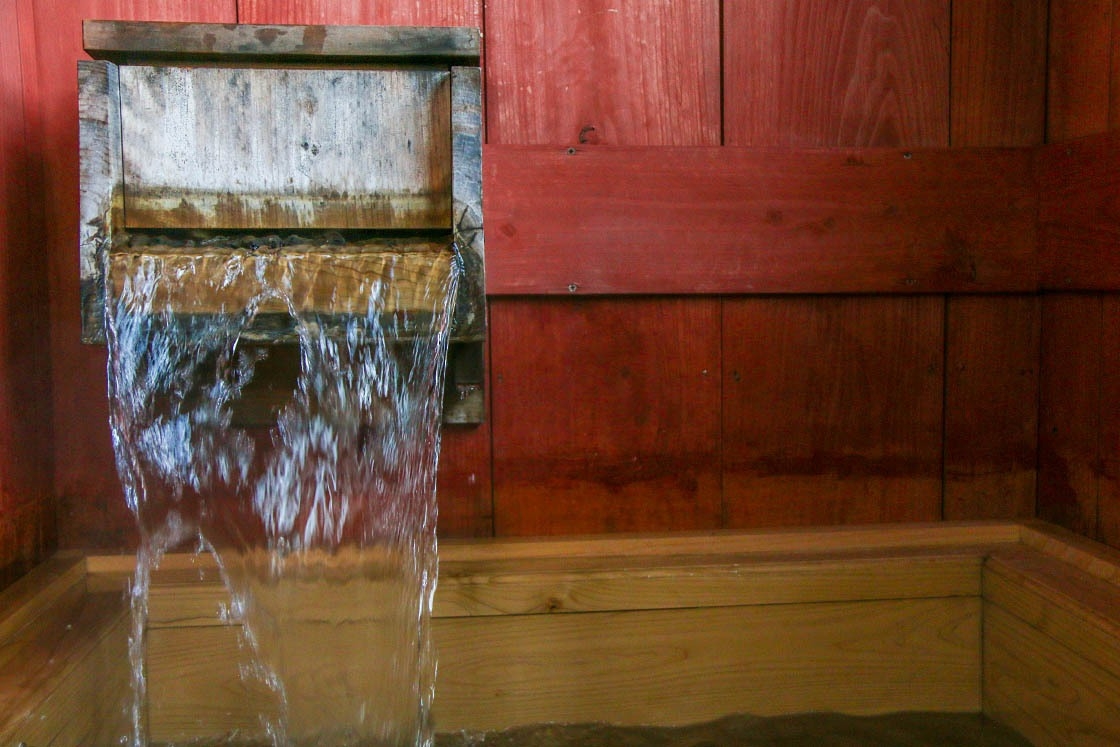
A private outdoor bath with onsen water from the source in my room
Day 2: Kuju Mountains
I started my day at the Tadewara Wetlands, just a 15-minute drive away from Sujiyu Onsen. The marshland, lying at the foot of the Kuju Mountains, seemed to be in constant motion as the endless waves of tall susuki grasses here were blowing in the wind and shimmering in the morning light.
Walking across the convenient boardwalk trails, it was fun to spot other varieties of plants hidden amongst the grasses, too.
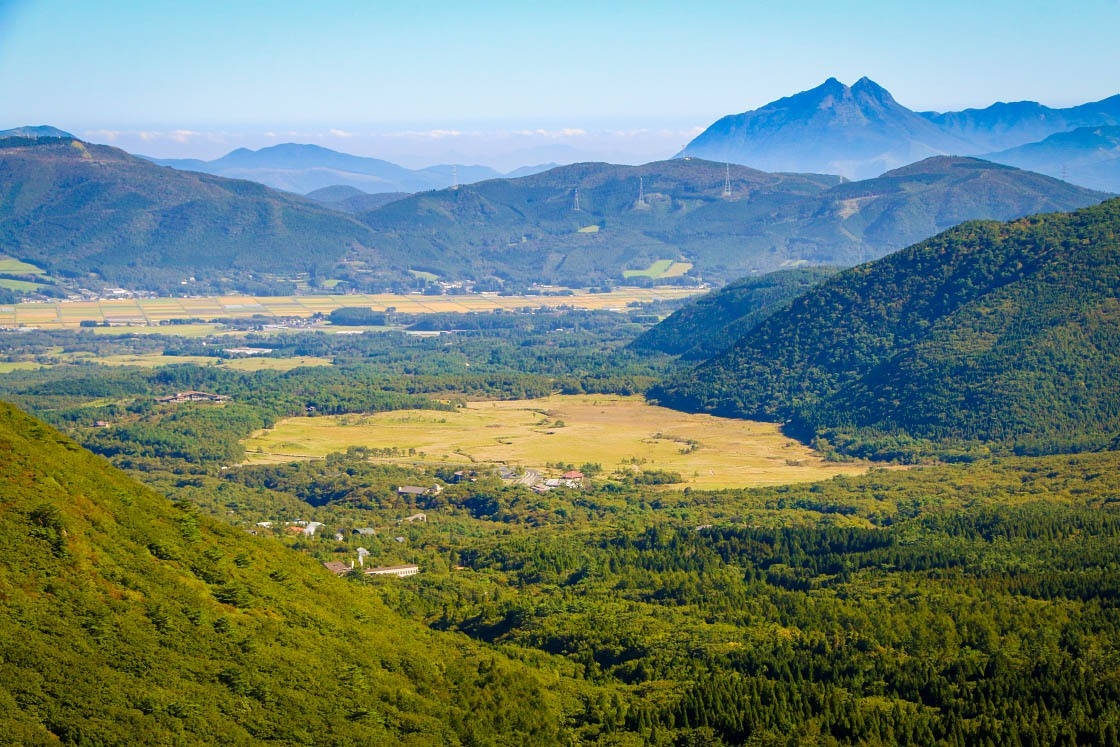
The Tadewara Wetlands at the foot of the Kuju Mountains
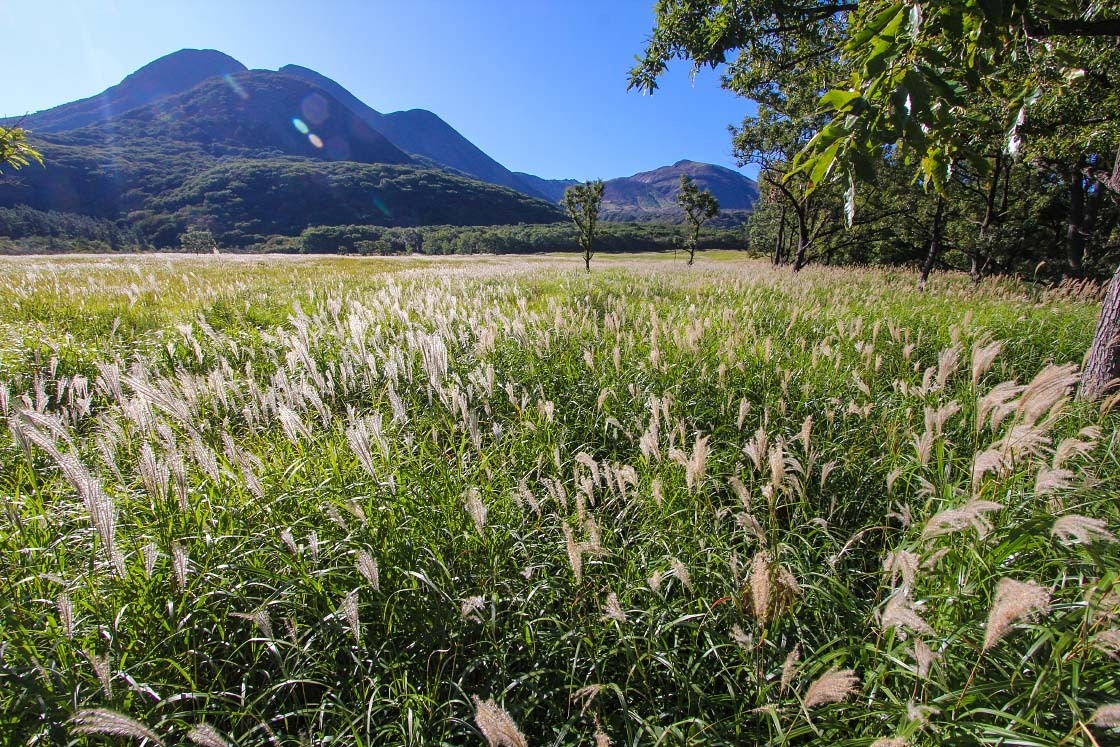
Tadewara Wetlands
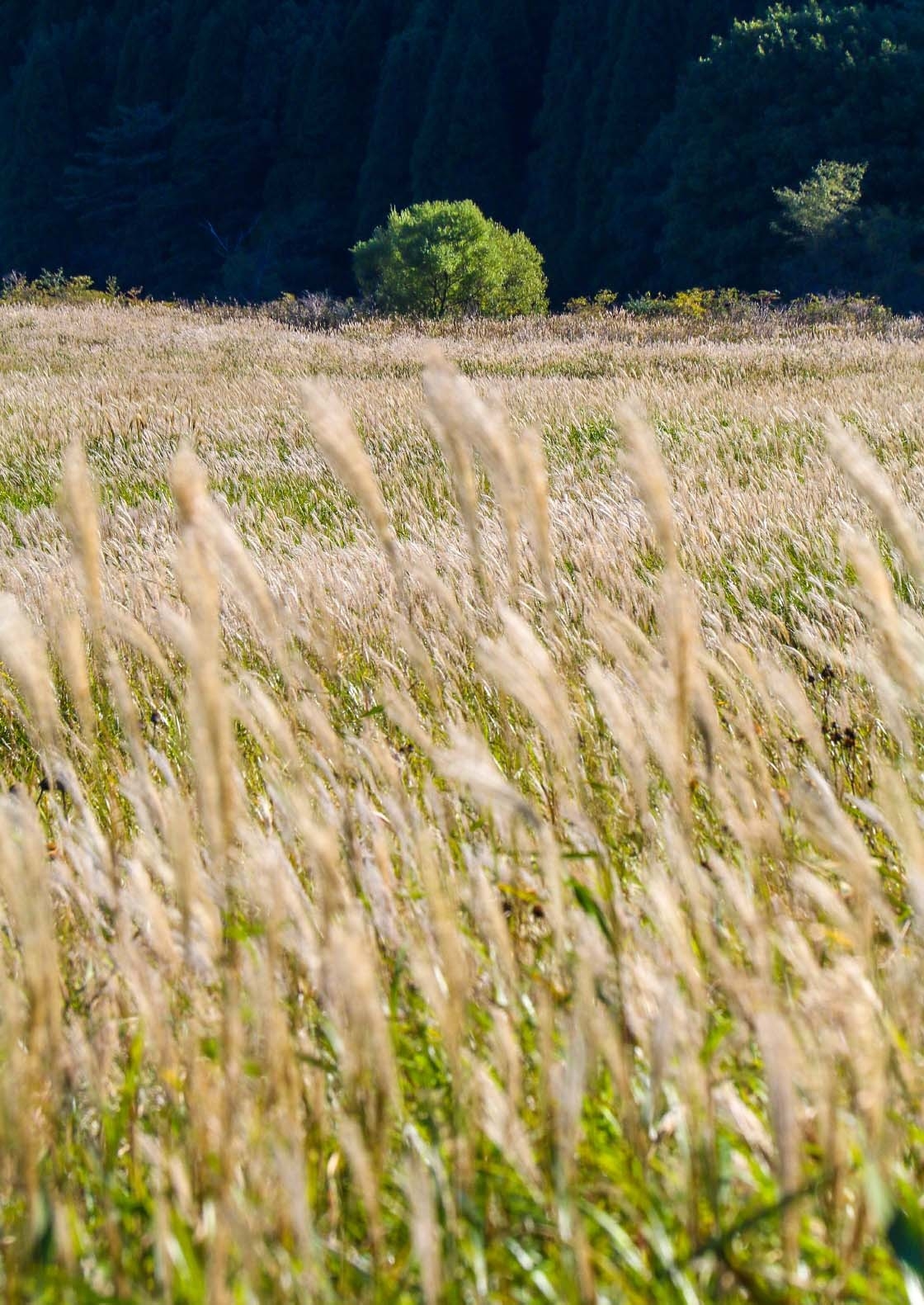
Susuki sea
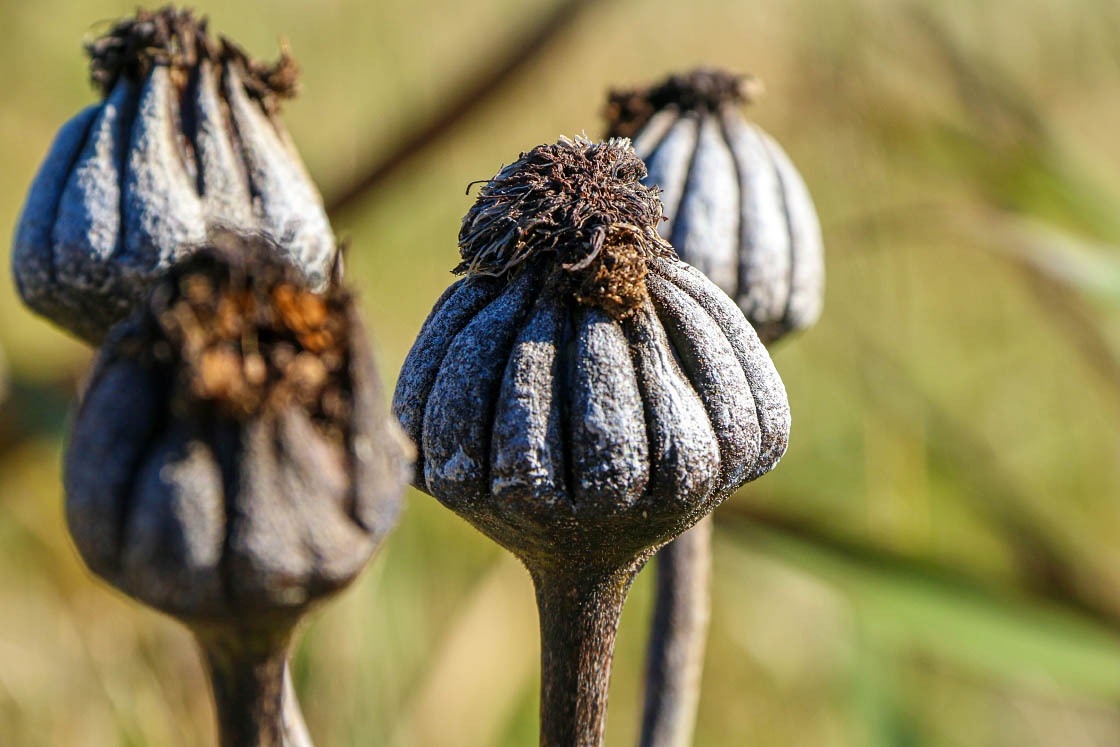
Fascinating plant pods about to open
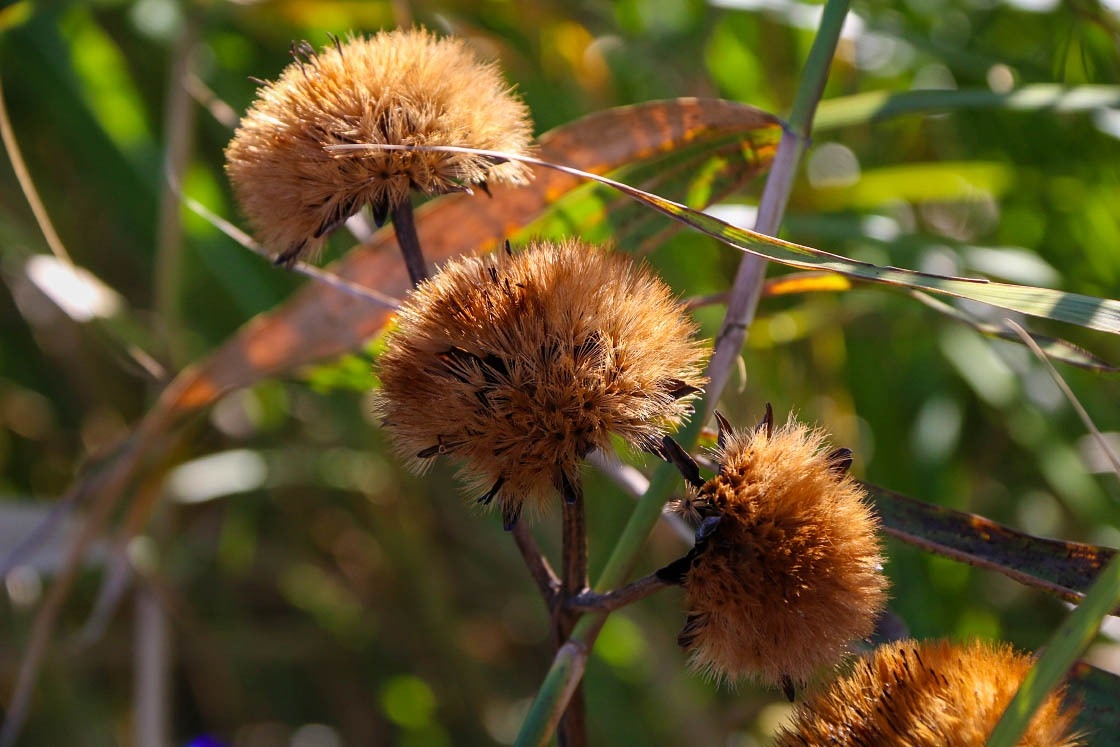
Fascinating plant pods: open
Once on the ridge, the beautiful mountain landscapes rolled out in every direction as I explored the trails amongst the peaks.
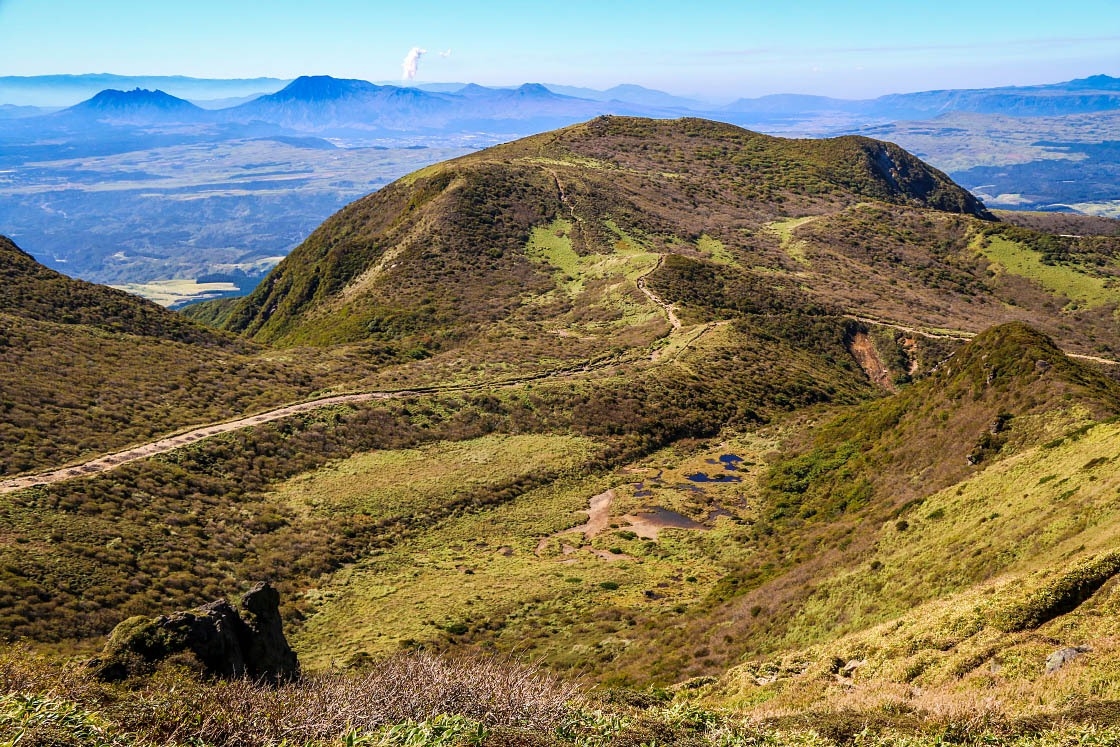
Hiking trails zig-zagging atop the Kuju Mountains
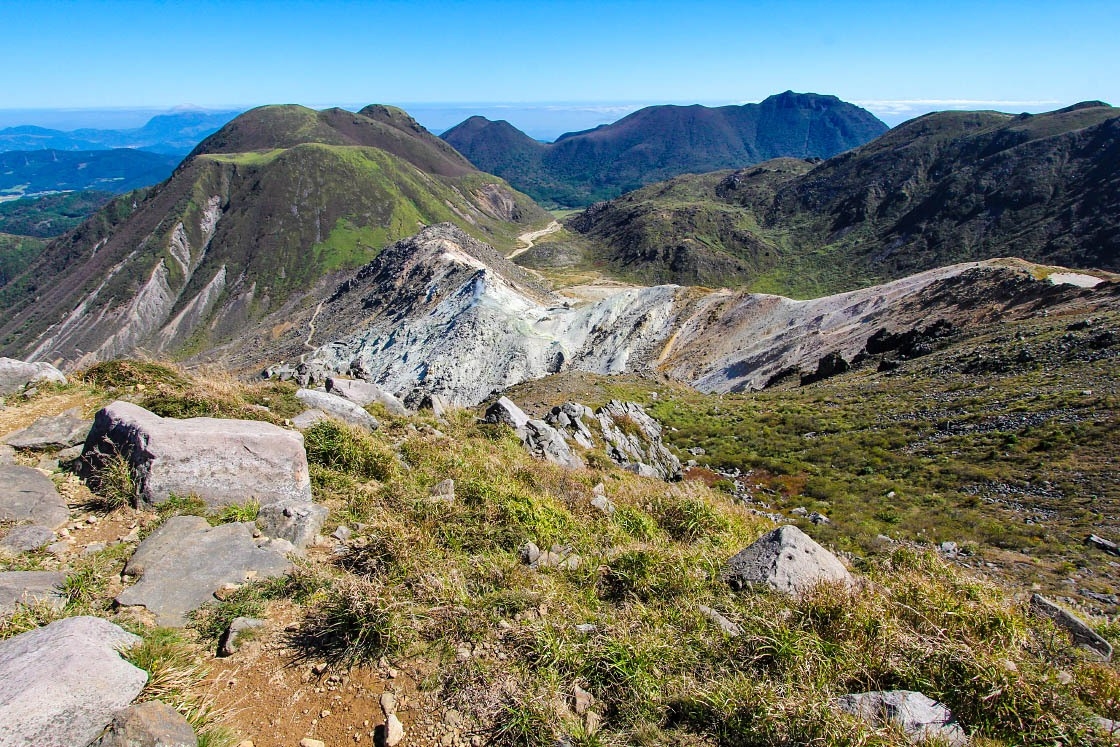
The view from the top of Mt. Hosshosan looking north
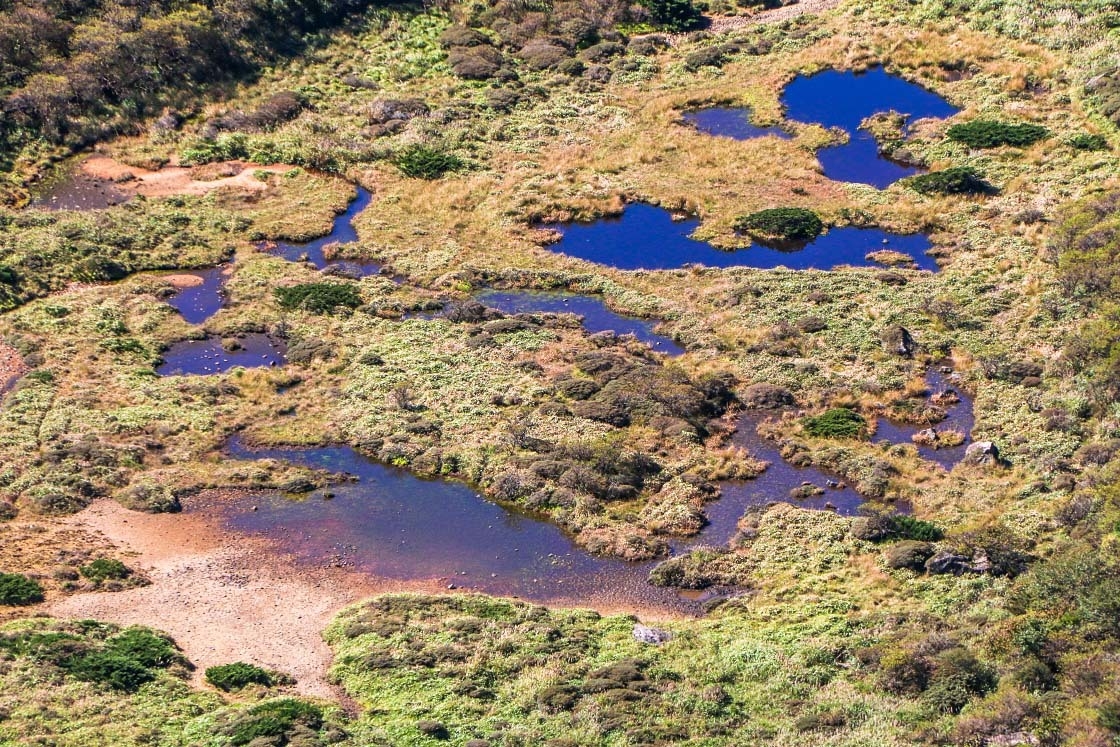
Ponds dotting the highlands between the Kuju peaks
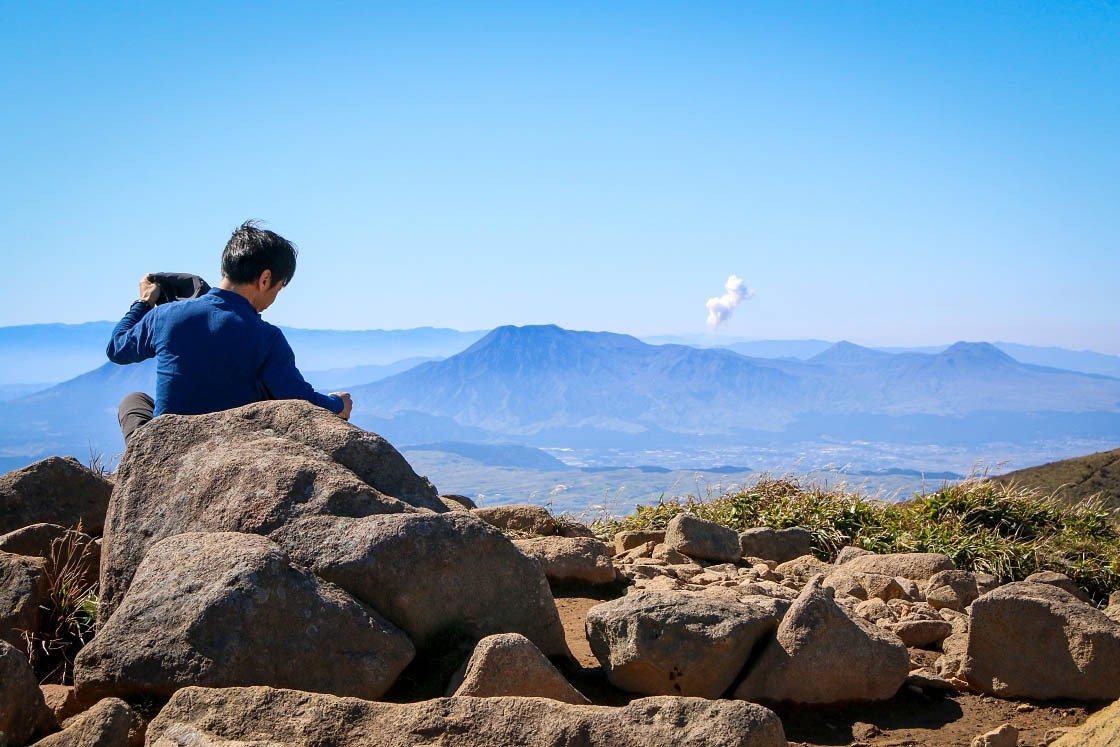
Still-smoking Mt. Aso in the distance
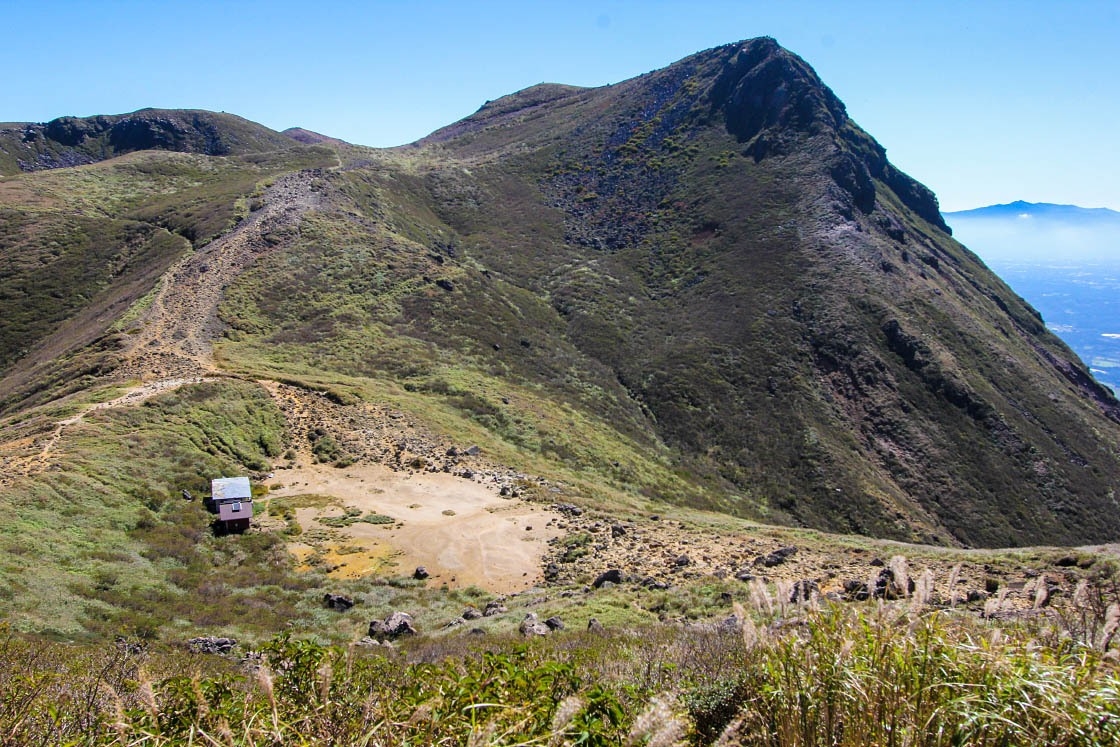
Mt. Kuju (1786 meters) itself
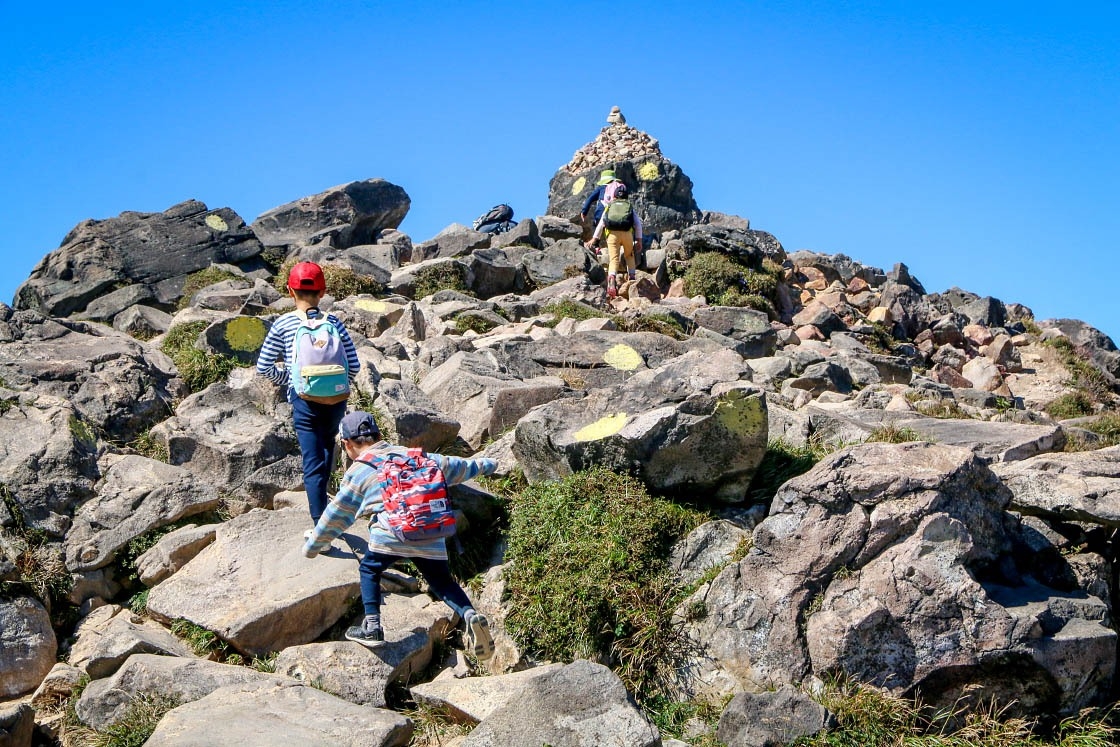
Going up
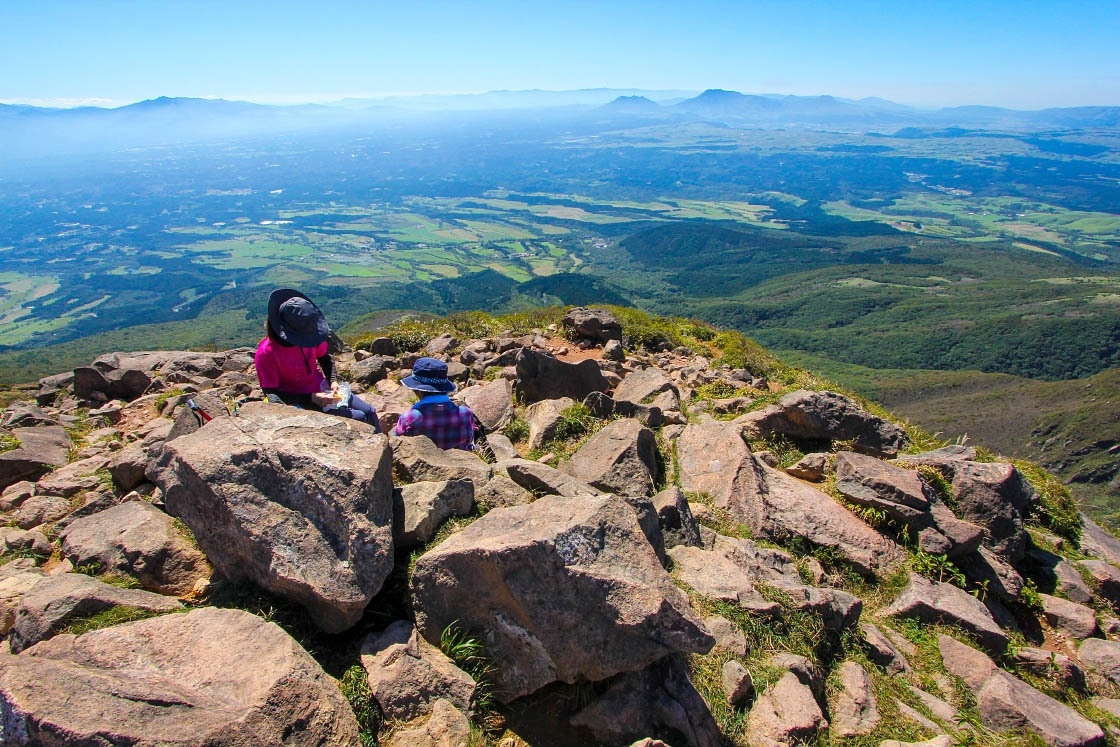
The endless view from the top of Mt. Kuju with Aso in the distance